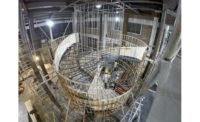
Sept. 19, 1985, was life-altering for Eduardo Miranda. That was the day his native Mexico City, where he was then finishing college, was devastated by a magnitude-8.1 earthquake. The fierce temblor killed more than 10,000 people, injured 30,000 and left thousands more homeless. It also destroyed 3,000 buildings and seriously damaged 100,000.

|
| MIRANDA |
Miranda's most recent project—developing an economical, quake-resilient wood-framed house—is a departure from the norm. "Most seismic research is related to big bridges or buildings," says Miranda.
During the study—"Seismically Isolated Unibody Residential Buildings for Enhanced Life-Cycle Performance"—researchers developed relatively low-cost base isolators. Shake-table tests on a two-story house confirmed predictions of drastically reduced damage.
"Eduardo's insights on non-linear dynamic response to earthquake ground motions were instrumental in devising the high-friction sliding isolators that reduced isolator displacement demands to levels that could be readily accommodated using conventional wood-frame construction," says Gregory Deierlein, a Stanford civil engineering professor who is the project's co-principal investigator, along with Miranda and Benjamin Fell, a California State University engineering professor. "Our graduate students refer to Eduardo as the encyclopedia of earthquake engineering as, indeed, he is the consummate scholar in the field," adds Deierlein. "He has an incredible depth of knowledge and passion for earthquake engineering."
The study team now is comparing shake-table test data to analysis models to see how well they align. Members also are exploring the properties of the isolators' polymer material as it ages.




Post a comment to this article
Report Abusive Comment